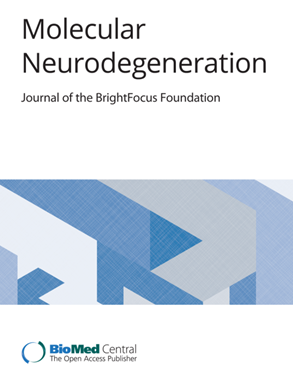The role of endolysosomal progranulin and TMEM106B in neurodegenerative diseases
IF 17.5
1区 医学
Q1 NEUROSCIENCES
引用次数: 0
Abstract
Although different neurodegenerative diseases are defined by distinct pathological proteins, they share many common features including protein aggregation. Despite this commonality, most current therapeutic approaches in the field, such as anti-aggregate antibodies, are focused on individual diseases or single neuropathologies with only limited success. The endolysosomal proteins progranulin and TMEM106B were both initially associated with frontotemporal lobar degeneration but have subsequently also been linked to other neurodegenerative diseases. Thus, these proteins are predicted to participate in common pathogenic pathways shared across various neurodegenerative diseases. Importantly, recent discoveries of TMEM106B amyloid fibrils in varied neurodegenerative diseases and glycosphingolipid regulation by progranulin and TMEM106B further support their central roles in cross-disease neurodegenerative mechanisms. This review summarizes recent advances in progranulin and TMEM106B function within the endolysosomal system and neurodegenerative diseases. It describes preclinical models and therapeutic approaches for progranulin- and TMEM106B-associated diseases. We also discuss future direction leading to novel alternative therapies targeting shared mechanisms in neurodegenerative diseases.内溶酶体颗粒前蛋白和TMEM106B在神经退行性疾病中的作用
虽然不同的神经退行性疾病由不同的病理蛋白定义,但它们有许多共同的特征,包括蛋白质聚集。尽管存在这种共性,但目前该领域的大多数治疗方法,如抗聚集抗体,都集中在个体疾病或单一神经病理学上,仅取得了有限的成功。内溶酶体蛋白前颗粒蛋白和TMEM106B最初都与额颞叶变性有关,但随后也与其他神经退行性疾病有关。因此,这些蛋白被预测参与各种神经退行性疾病共有的常见致病途径。重要的是,最近在各种神经退行性疾病中发现的TMEM106B淀粉样原纤维,以及前颗粒蛋白和TMEM106B对鞘糖脂的调节,进一步支持了它们在跨疾病神经退行性机制中的核心作用。本文综述了蛋白前蛋白和TMEM106B在内溶酶体系统和神经退行性疾病中的功能的最新进展。它描述了前颗粒蛋白和tmem106b相关疾病的临床前模型和治疗方法。我们还讨论了未来的方向,导致新的替代疗法针对神经退行性疾病的共同机制。
本文章由计算机程序翻译,如有差异,请以英文原文为准。
求助全文
约1分钟内获得全文
求助全文
来源期刊

Molecular Neurodegeneration
医学-神经科学
CiteScore
23.00
自引率
4.60%
发文量
78
审稿时长
6-12 weeks
期刊介绍:
Molecular Neurodegeneration, an open-access, peer-reviewed journal, comprehensively covers neurodegeneration research at the molecular and cellular levels.
Neurodegenerative diseases, such as Alzheimer's, Parkinson's, Huntington's, and prion diseases, fall under its purview. These disorders, often linked to advanced aging and characterized by varying degrees of dementia, pose a significant public health concern with the growing aging population. Recent strides in understanding the molecular and cellular mechanisms of these neurodegenerative disorders offer valuable insights into their pathogenesis.
 求助内容:
求助内容: 应助结果提醒方式:
应助结果提醒方式:


